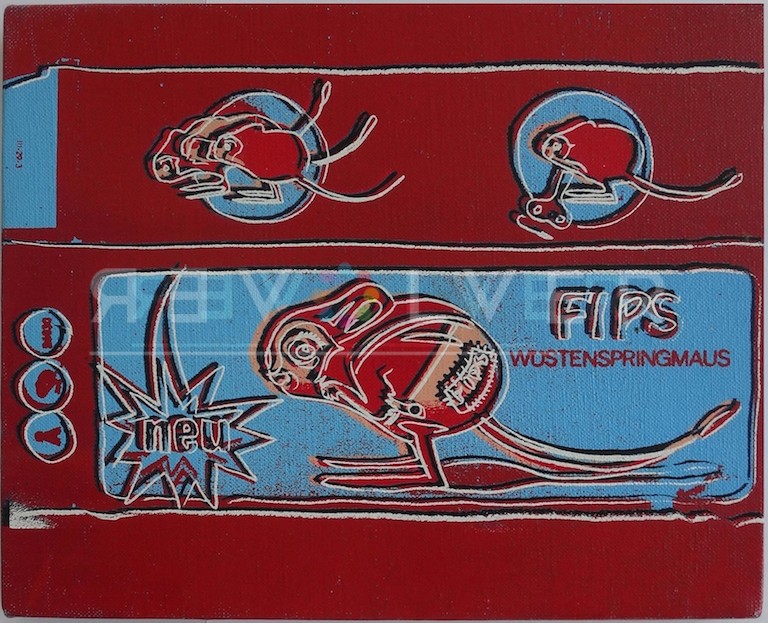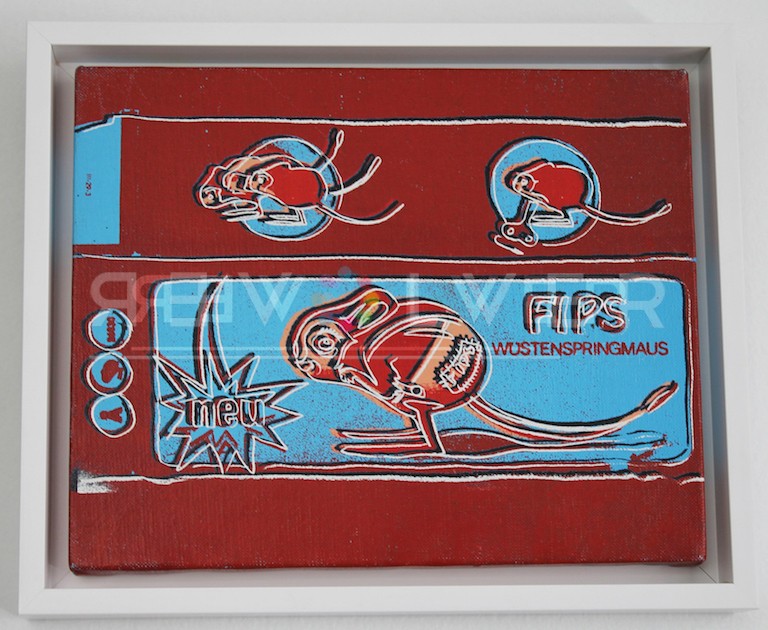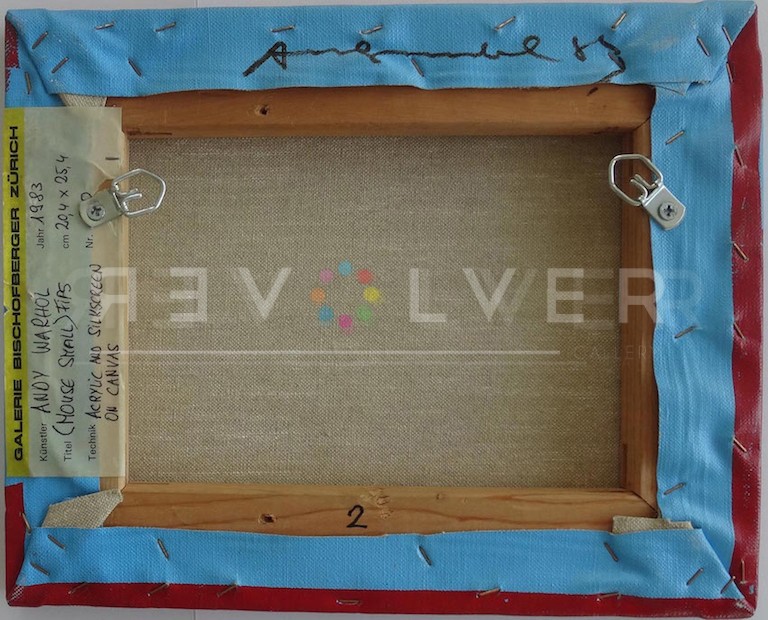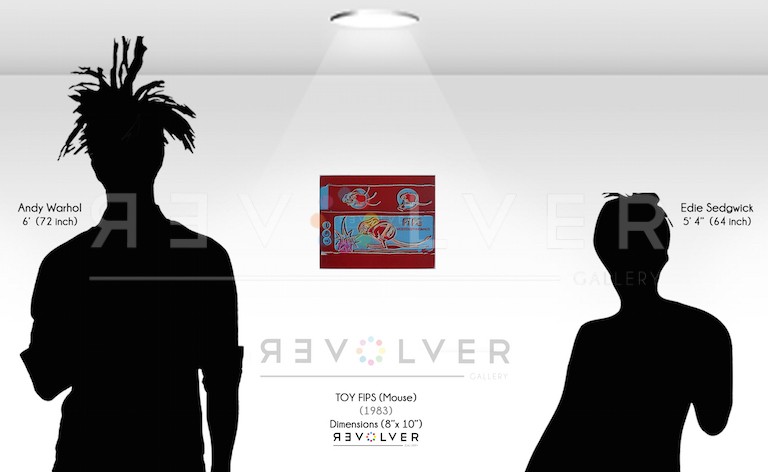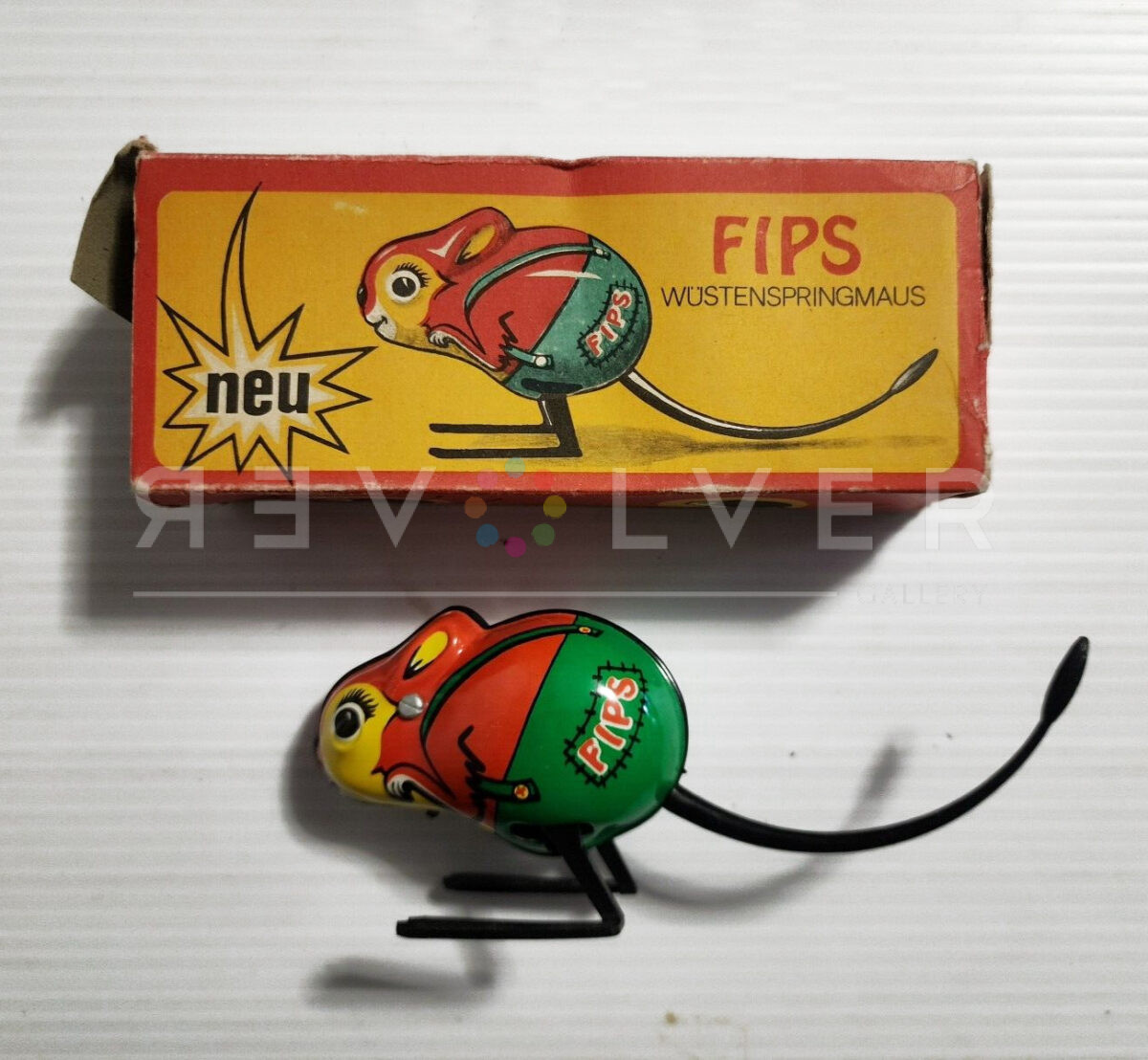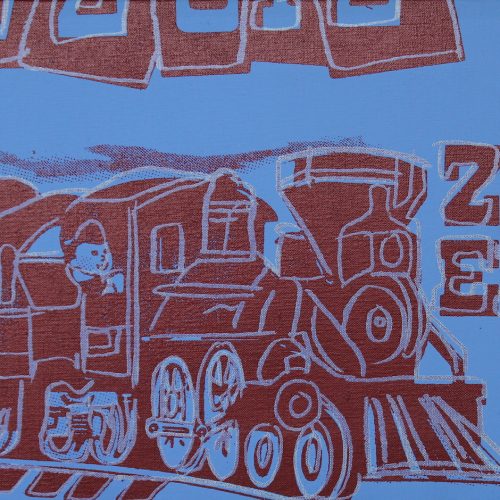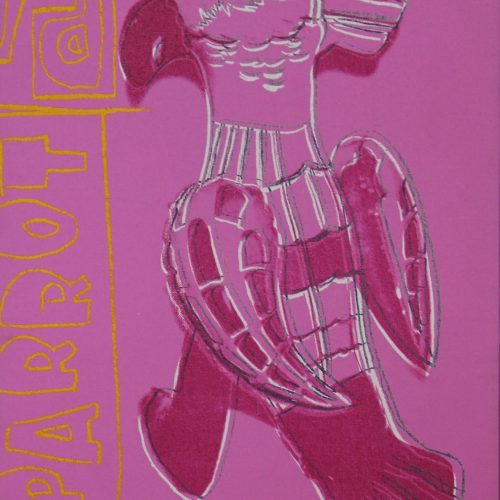In Andy Warhol’s captivating Toy Paintings series, the artwork FIPS Mouse stands out as a bold and politically charged creation. Warhol crafted this unique silkscreen and hand-painted composition in 1983, and drew its inspiration from a wind-up toy called a “Fips Wüstenspringmaus” manufactured in the former East Germany (DDR). Rather than portraying the toy itself, Warhol focuses on the packaging, elevating the imagery from a mere object of play to a symbol of commercialism and societal values. The Toys series also includes Parrot and Fish.
Painted in a vibrant palette of bold red, turquoise blue, and clean white hues, FIPS Mouse exudes a sense of playfulness and childlike wonder. The composition is masterfully rendered to create the illusion that it should be viewed using 3D glasses, adding an element of dynamism and fun to the artwork. This playful approach echoes Warhol’s fascination with the joyful world of toys and their packaging.
Warhol’s choice of toys for this series is not without intention. By selecting toys manufactured in communist countries, such as China, North Korea, and Russia, he infuses the artwork with political significance. Amidst the backdrop of the Cold War, these toys were seen as products of countries with values antithetical to those of America and Western Europe. However, through FIPS Mouse, Warhol emphasizes that childhood wonder and play are universal aspects of human experience that transcend political ideologies. Regardless of one’s background, the joy and imagination of play are shared by children across the globe.
The Toy Paintings series, including FIPS Mouse, playfully references Warhol’s earlier iconic works, such as Campbell’s Soup Cans and Brillo Boxes. By focusing on the packaging rather than the objects themselves, these paintings comment on the culture of consumerism and the allure of commercial products in modern society. Just as Warhol elevated everyday objects to the realm of art, he similarly transforms toy packaging into potent symbols that provoke thought and contemplation.
FIPS Mouse (Wüstenspringmaus) serves as a poignant reminder of Warhol’s astute observation of the world around him and his ability to infuse art with political undertones. The artwork challenges viewers to consider the universal appeal of play and childhood wonder, as well as the complexities of commercialism and political ideology. Through vibrant colors, dynamic compositions, and profound symbolism, Warhol continues to captivate audiences and provoke reflection on the human experience.

